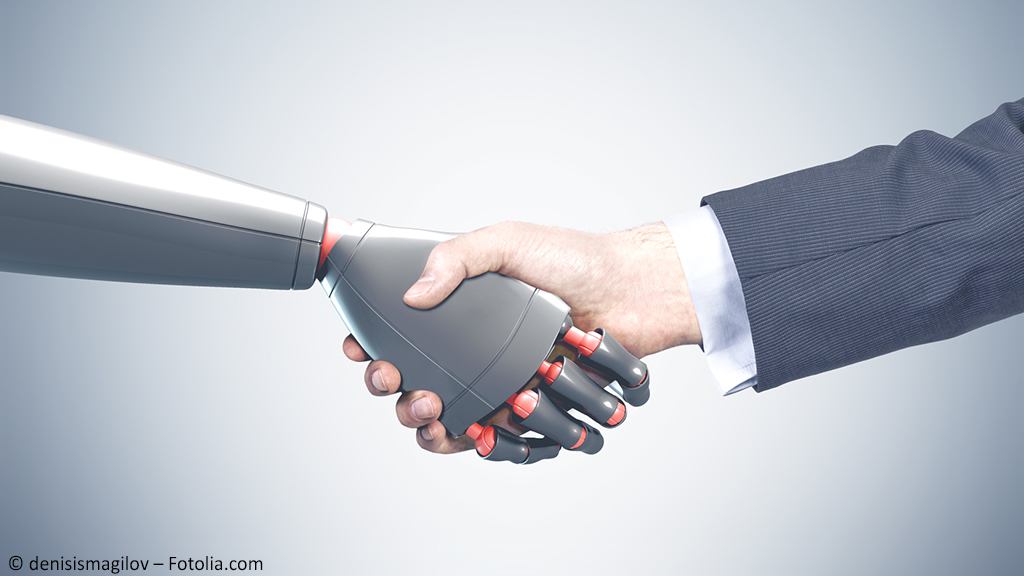
Breaking New Grounds
Departing from familiar paths to look for new ways, leaving everything behind – that‘s hard. Those who do not adapt to ever changing environmental conditions are at a disadvantage. This piece of wisdom is clear to everyone. That which applies to us humans does not stop at organizations. But why do organizations have to adapt and submit to radical change or even vanish completely?
To see this, try to envision the year 2040: How likely is it that classical organizational forms will still exist? That there will still be companies with fixed hierarchies and structures and clearly defined processes, systems, and functions? Might there be other, alternative organizational forms that are much better adapted to the trends and changing conditions we are already able to see today?
The Challenge of Megatrends
Dealing with the new megatrends seems to be important for survival, now that managers are supposed to be “agile” and find their way in the current industrial revolution of digitization, namely “Industry 4.0”. While digitization is not really new, its great interdependence with business and IT’s self-sufficiency are indeed two very recent manifestations. And then there are the multi-generations, internationalization, and global flows of goods with unequal demographic development. At the center of it all are human beings in their organizations, which would like to adapt to the new customer needs and new employee expectations. To do this, the organization will have to keep developing and put away old character attributes. If one looks at today’s companies, one will find that in many cases there is no basic difference to the organizations of 100 years ago.
Managers Have Some Catching up to Do
According to a recent survey of 129 managers, traditional organizational forms will most likely be abandoned in the area of communications and in the role of companies as mere places of work (Albrecht, 2017). What does that mean specifically? Virtual work, meaning one is not physically present and yet works while networked with other conference participants as well as with androids/robots, requires
- a dislodged mode of work that is not necessarily tied to a particular place,
- increased flexibility in assuming responsibilities (broad, in-depth expertise),
- continuous adjustment of soft skills and hard skills (LLL = life-long learning),
- a very professional manner (issue-related solutions to problems), and
- a greatly increased person-related cooperation (build-up of trust).
Consequently, the organization will become a cooperation umbrella, which can but need not be physically present. The organization will be a free association and dissociation of experts to a virtual company. This temporary, intangible company will be able to provide optimal satisfaction of customer needs because it will arise solely for this very one purpose. “Brick and mortar” companies will not be needed any more. The physical presence of employees and their investment of lifetime within well-defined rooms will become obsolete! However, it will be necessary to guide employees by setting objectives and checking their performance.
New Forms of Communication
Tomorrow’s communication will focus more on “blended meetings”. That is, most meetings will be conducted virtually, and only from time to time will a face-to-face meeting be needed to refresh the participants’ memories. Theoretically, this is ideal, but practically the quality of virtual meetings is highly questionable. However, new communications formats within agile project management such as Scrum open up promising opportunities. In the case of Scrum, the communications tempo is indeed set by daily meetings that last 10 to 15 minutes, however this rigid structure is compensated by transparency and unrestricted selection of topics, so that the employees are able to work more flexibly.
Setting up virtual project management has become comparatively simple at the technical level. Programs such as slack, Mattermost, Zulip, Circuit, and others can improve exchange of data and deliver a common platform for the members of project teams. However, communicating exclusively via tools can give rise to intercultural misunderstandings, so critics recommend them only as a supportive function and not as a substitute for face-to-face meetings.
What Should a New Organizational Form Look Like?
Changed customer needs require old organizational forms to be adapted. Moving to the customer is a method that is already known to automotive suppliers, which settle on the production premises of their B2B customer. The new thing here is that this is done not only together with a single customer, but also with two or more third party providers.
It turned out, surprisingly, that when managers were asked how they saw the company of the year 2040 (Albrecht, 2017), they perceived it as a place for socializing, which promotes social exchange between colleagues and business partners. This is a radical departure from the concept of the company as a physical location dedicated to work.
Those who visit trade fairs can experience similarly extreme transformations of organizational forms. Trade fairs were once used for delivering lectures, concluding contracts, and presenting production and new products to visitors. Today, trade fairs tend to serve as venues for exchanging information and meeting colleagues, competitors, and associations. Companies that want to present product innovations may well drive directly to their customers rather than use their presence at a trade fair for this purpose.
Certainly, many classical organizational forms will be retained, especially for the more haptic products and services. However, given the background of an ever stronger ‘life-domain-balance’ (Ulich and Wiese, 2011), new disruptive forms of organization will be welcome not only to generation Z.
Equipment for Disruptive Paths
Which new paths should be taken and with which equipment? Which skills and competencies will tomorrow’s managers need? The following five factors are likely to be decisive:
- New Definition of Work
The notion of work/job has to be redefined because many classical workplaces will fall by the wayside or require a high level of education or IT skills.
Knowledge of interfaces is becoming increasingly important, especially where humans in organizations are replaced by automation of production processes, control systems, and routine activities, such as, for example, in the areas of administration, taxes, finance, controlling and marketing research.
- Human-Machine Communication
Virtual forms of communication will have to be practiced more intensively and anchored early on in vocational training.
Language communication barriers between humans and robots will also have to be overcome in practice by early trials of prototypes (H2M = Human to Machine).
- The Workspace as a Mere Communication Platform
The organization must serve as central platform for exchanges of communication within the meaning of a network node or information hub for increasing contacts to customers, suppliers, and governmental authorities.
Managers and employees must be included to a greater extent in the development of a competence center for specific questions and also be committed to life-long learning. Methods for exploiting mental resources, both old and new, such as think tanks, brainstorming, think labs, and business coaching will become “state of the art”.
- Fusion of Leisure Time and Working Hours
Work and projects management are regulated solely by agreements on objectives. Compensation for performance is based on achievement of these objectives.
The employees must be offered a program of various leisure time activities, which they can use by themselves, or together with their families, or with colleagues and customers. Equipping an employee with technical infrastructure will ensure that productive meetings can be conducted while the employee is at home or on the road, for example by means of video infrastructure or an autonomous company car.
- Maintenance of Loyalty
Enduring loyalty can be achieved only through team-building measures, that is, through joint activities and great transparency of communications and exchange of information.
A new management model based on a shared leadership approach leads, through delegation and development, to better integration of employees and increases their identification with their work and with the (possibly virtual) company. The project manager’s leadership qualities must be secured and reinforced by ongoing education because he or she should serve as an example and transport the company’s values into the project team by demonstrating and applying them there.
Many of these approaches are already visible in companies today. However, consistent implementation requires a pioneer spirit. This pioneer spirit has actually been present in German companies to a great extent, but the high investments, which are currently required for this, provoke a rather conservative attitude in small and medium-sized companies. Hence, it is now up to you to break new grounds!
References:
- Albrecht, A (2017), Disruptive Organisationen. Gruppe. Interaktion. Organisation. Zeitschrift für Angewandte Organisationspsychologie, Springer Nature Verlag, 48: 185–192*
- Albrecht, A (2016), Internationales Management, Berliner Wissenschaftsverlag, 26-29
- Ulich, E, Wiese, BS (2011), Life Domain Balance, Springer Verlag, 19-58
*Contents were mainly taken from the main article of the GIO magazine (Springer Publishing), published by Prof. Dr. Arnd Albrecht: https://www.springerprofessional.de/disruptive-organisation/13444678





